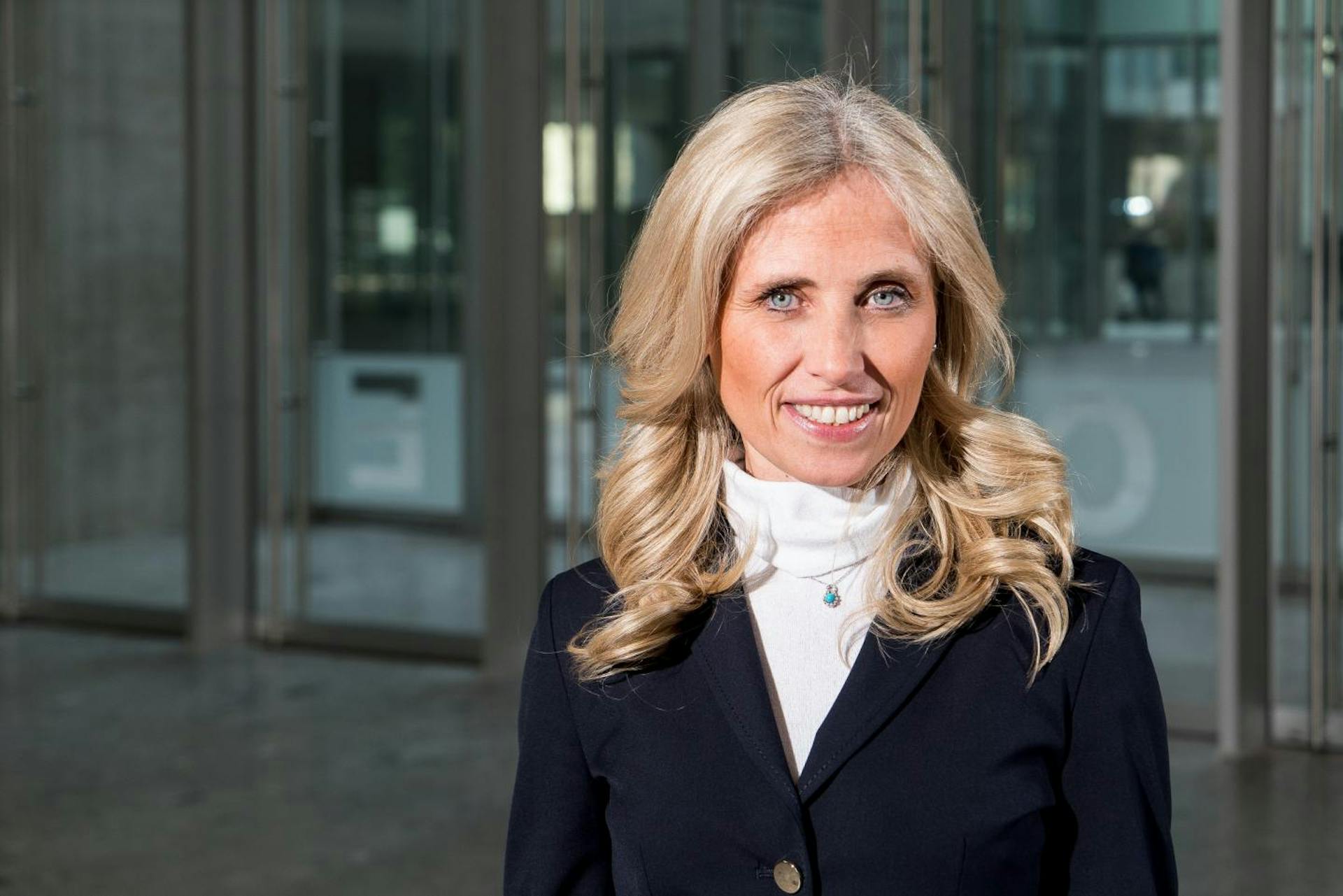
March 31, 2022
Gender equality: Challenges ahead. From She-cession to She-recovery
The Covid-19 crisis has crippled female-dominated sectors, causing a she-cession
that poses additional challenges to gender equality. During a conference held on 7 March 2022, following a presentation of research insights from Italy, Spain, the UK, and the US, industry leaders and policymakers discussed the steps needed and initiatives implemented for a she-recovery
. The event was organized within the framework of the AXA-Bocconi Research Lab on Gender Equality and was supported by AXA Italy and the AXA Research Fund.
she-cessionthat poses additional challenges to gender equality. During a conference held on 7 March 2022, following a presentation of research insights from Italy, Spain, the UK, and the US, industry leaders and policymakers discussed the steps needed and initiatives implemented for a
she-recovery. The event was organized within the framework of the AXA-Bocconi Research Lab on Gender Equality and was supported by AXA Italy and the AXA Research Fund.
13 minutes
Original Content: AXA Research Fund
PART 1: RESEARCH INSIGHTS
After welcome addresses from Gianmario Verona, Rector of Bocconi University, and Giacomo Gigantiello, CEO of AXA Italia, institutional greetings were extended by Pina Picierno, Vice-President of European Parliament. Gender equality is key for the future of our economies and for the future of Europe,
she said in a pre-recorded message. No one denies the importance of gender equality anymore.
Italy
The first to share recent research findings was Prof Paola Profeta, Professor of Public Economics and Director, AXA Research Lab on Gender Equality, Bocconi University. Her work has been conducted in Italy, which has one of the lowest female employment rates in Europe, at 49% pre-Covid. Moreover, 84% of female employment in Italy is in the service sector, which has been hardest hit by the pandemic.
Women are the primary providers of informal care for children and older people in Italy. This is largely a result of stereotypical gender norms, as well as the inadequate provision of formal care for young children. Remote working during the pandemic has seen greater involvement of men in household and care activities—while the hope is that this will induce less traditional gender roles that could, in the long run, reduce the gender gaps, with remote working, women have taken on more household and care duties. This means that the gender gaps are not really closing. Actually, they have increased slightly compared to before the pandemic,
said Prof Profeta.
Prof Profeta also noted that while the policies put in place during the pandemic were meant to be gender-neutral, they were not. For example, schools closed for longer in countries with lower female participation in the labor market, such as Italy, and parental leave was primarily requested by women. According to Prof Profeta, This means that these policies may have exacerbated pre-existing gender gaps.
Given the increased difficulty to find a new job, women are also increasingly exposed to toxic working environments. We risk losing the improvements that we have experienced so far in the labor market, such as those seen as a result of the #MeToo movement and cultural changes within companies,
she said.
Finally, Prof Profeta asserted that achieving gender balance in decision-making positions could facilitate a she-recove
by bringing a more balanced view on the priorities. In a large-scale study, she found that women are more likely to agree and comply with restrictive measures, which could predict more effective responses by female leaders. Indeed, Prof Profeta observed more promotion of income support and fewer school closures in female-led countries. This has implications for gender equality, given that women are more affected than men in the way work is organized at home,
she said. In preliminary work, she also found that female mayors of small municipalities in Italy spent more on social policies. The contribution of women will therefore be particularly relevant when it comes to how we plan to recover after the pandemic,
Prof Profeta concluded.
Spain
A more complex picture emerged in Spain. While 2020’s steep decline in employment was primarily seen in female-dominated sectors, the creation of new jobs meant that some sectors grew. Prof Libertad González, Associate Professor of Economics, Universitat Pompeu Fabra, joined the conference by video live stream to report her latest insights. Some of the shrinking sectors were female-dominated, and some of the growing sectors were also female-dominated,
she said. For example, the hard-hit household sector is 88% female-dominated, and the growing health and social services sector is 76% female-dominated. Overall, the pandemic hit male and female employment very similarly,
said Prof González. So in the case of Spain, can this really be called a she-cession?
Nonetheless, more engagement in the informal care of children and relatives meant that women in Spain were working more as a result of the pandemic. Mirroring findings from Prof Profeta, Prof González found that while both men and women reported spending more time on childcare during the pandemic, this increase was greater in women, reaching 38.4 hours/week. Women were also more likely than men to work from home during the pandemic. Women were affected similarly to men in the labor market but experienced greater increases in hours spent doing household work than men, so essentially had a double shift during the pandemic,
said Prof González.
Prof González’s findings indicate that we are entering a more skilled, digital, and green economy. She, therefore, recommended we channel workers from low-skilled sectors, such as household services and hospitality, to some of the higher-skilled and growing sectors. We should also continue to promote the presence of women in STEM, such that they can take advantage of the growing sectors in the digital economy.
In concluding her presentation, Prof González noted that policies that promote men’s increased contributions to childcare and housework are going to be crucial in promoting women’s attachment to the labor force. Future policies should promote flexible work for both women and men. Failing to do so could result in a double-edged sword policy since we risk sending women back home while men stay in the workforce,
she said.
US and UK
Other than an equity
point of view—what is fair
—there is also an efficiency
reason for striving for a more gender-balanced workforce. Addressing this point was Prof Almudena Sevilla, Professor in Economics and Public Policy, UCL. If we are misallocating female talent, we’re not reaching our potential as an economy, as a company, or as human beings. There is now more recognition within mainstream economics that this is the case,
she said. For example, the 10-year increase in GDP in the US has been partly driven by more women and minorities entering the labor market.
Analyzing vast data from parents in the US, Prof Sevilla found that men and women had the same number of jobs in February 2020, but by December that year, women had almost 1 million fewer jobs than men. While the labor force rates of men and women have now converged, this doesn’t mean that women were not hit harder,
she explained.
Pre-Covid, there was already a stark inequality in the division of household labor between men and women. Prof Sevilla’s research has shown that the greater effect of school closures in the US on women persists even now and that the pandemic increased housework and childcare hours for women. The story was the same in the UK: In Spring 2020, women’s housework and childcare hours were higher than those reported by men, and their paid work was half that of men.
Prof Sevilla also raised the question of whether remote working is the way forward. She found that paid work, housework, and childcare were all being done at the same time of day by both men and women working remotely. This shows that we need to devise new ways of thinking about how we manage to work from home,
she said. In financial workers, remote working did not change the work structure, but both men and women reported a more unpredictable workload. Workload unpredictability increased by 10%. Unpredictable work is associated with a greater willingness to leave the industry, particularly for women,
Prof Sevilla said.
A Note on Mental Health
The socioeconomic inequalities brought by the pandemic also extend to mental health. Joining from video live stream, Antimo Perretta, CEO of AXA Europe and Latin America, introduced the new Mind Health Study 2022. The study, involving 11,000 participants, has shown that women face more challenges to their mental health than men—as well as lower salaries, they have more financial instability, are more likely to be unemployed, and have less downtime. Furthermore, men typically make more money than women, so, for many, it made more financial sense for women to stay at home with the children during the pandemic. Therefore, knock-on effects for women’s mental health are a consequence of structural inequalities that existed before the pandemic,
said Mr. Perretta. Building on AXA’s existing mental health services, Mr. Perretta reported the creation of a new tool that measures global well-being: the AXA Mind Health Index. The hope is that this index will assist companies, healthcare professionals, and governments to monitor and improve mental health, and engage in proactive and preventative activities.
PART 2: TOWARDS A SHE-RECOVERY
: ROUND TABLE
In the second panel, business leaders and policymakers discussed what measures and actions are needed for a she-recovery
. This round table was moderated by Dario Donato, Journalist at Mediaset TGCOM24, and the panel included:
· Ginette Azcona. Research and Data Specialist, UN Women
· Silvia Candiani, CEO, Microsoft Italy
· Kirsty Leivers, Global Head of Culture, Inclusion and Diversity, AXA
· Marina Mendes Tavares, Economist, International Monetary Fund
Is there such thing as a gender-neutral crisis?
Ginette Azcona: The impacts of crises are never gender-neutral, and Covid-19 is no exception. New projections show that women have been particularly hurt by the resulting economic and social fallout of the crisis in terms of global poverty, the fall in employment—4.2% compared with 3% for men—and broad measures of health and well-being, including access to family planning services. Reports of violence against women and girls—what we call the shadow pandemic
to Covid-19—have also increased in many parts of the world. The gender and other enduring fault lines of inequality are not new but have been made worse by Covid-19. For this reason, governments and businesses need to respond to these issues with gender-sensitive policies.
Could remote working be part of the solution?
Kirsty Leivers: It could be the solution, or could make things worse. With the crisis, we had the chance to break our way of working, and now we can rebuild it while adopting the right habits. Smart ways of working will be different for everybody; for example, AXA is in 54 countries, so that’s a lot of employees in very different circumstances. When embracing the opportunity to build a more equal workplace, we have to be deliberate. For example, we must avoid creating a two-tier system, where men go to the office every day and women work remotely.
Did the term she-cession
come as a result of the Covid pandemic?
Marina Mendes Tavares: The term she-cession
was in fact coined during the global financial crisis of 2008. When we say he-cessation
and she-cessation
, it’s not that one gender is affected and the other not. These terms refer to the gap between men and women. In 2008’s global financial crisis, male-dominated sectors were hit, so it was a he-cession
. The present crisis is of the female-dominated services sector, hence the term she-cession
.
What has the pandemic meant for the way people work in the technology sector?
Silvia Candiani: Personal preferences differ. Around 76% of our Microsoft employees want to continue to have a remote option, while others want to return to the office. Similarly, some report being able to better concentrate at home, others in the office. We gave employees complete freedom to organize themselves at home or in the office, but do recommend some sort of team charter between the manager and the team on how to work effectively. We also need to ensure that home-based workers feel included and don’t miss out on opportunities. Despite seeing an increase of up to 20% in productivity at Microsoft, remote working can also cause a loss of sense of purpose and belonging to the organization.
How did the pandemic impact the United Nations’ goals for achieving gender equality by 2030?
GA: Unfortunately, the pandemic has stopped—and in some cases reversed—progress. Status assessments have revealed that the world is not on track to achieve gender equality by 2030. Progress has been made concerning discriminatory laws and practices, but this is deeply insufficient. Unfortunately, we’re also seeing some increases in child marriage actually as a result of Covid-19. It’s great to hear from the other panelists that businesses are taking concrete steps to address these issues because the data show that inequality in the home translates to inequality in paid work and career advancements.
What could policymakers do to reverse this trend?
GA: Making women’s empowerment central, because where women thrive, societies thrive. Companies can do much in terms of offering flexible working hours and locations, but also by promoting policies that make a difference, such as increasing maternity benefits, parental leave, and access to emergency leave. In many countries, we’re advocating reforming and removing discriminatory laws that stop women from working in certain sectors. Another quick win
is promoting transparency in terms of how much money women and men are making.
MMT: To add to this, in Spain, Italy, and the UK, women are back to work, but this is not the case in emerging markets and low-income countries, so there the situation is a little different—we need to bring women back to the workforce.
How can we bring women back to the workforce in emerging markets?
MMT: We need to invest in education and opportunity. In less-developed countries, girls need to go to—and stay in—school. For that, family planning and women’s health is key. These essential services were sometimes forgotten during the lockdowns, and many women suffered violence during the lockdowns and had no safe place to stay. This also adds to Professor Profeta’s earlier point: Because women were not part of the decision-making process, the services deemed essential were chosen by man-lens. We need more equal participation in the private sector and policy-making.
Is family decision-making also a cultural problem?
MMT: In many countries, the lack of a care economy means that someone—usually a woman—must spend hours with the children. Also, an issue here is the division of labor inside the household. Men did engage in more housework during the lockdowns, but the data do not indicate that this has continued.
GA: To add to that, many women decided to stay home, not necessarily because of cultural reasons, but because of the policies and inequalities that were already baked into those decisions. For instance, if the man made more money and was more advanced in his career trajectory, it made more sense for the higher earner to continue working. So, unequal pay and access to higher-level management positions contribute to inequalities we see in the division of care responsibilities at home.
Is there is a risk of an inversion in the labor market?
KL: The next phase could prove even more difficult from a workforce point of view, and we’re making choices that could affect the next 50 years of the way that we work. As we rewrite our working model right now, there are three possibilities. First, we go back to how it was before; second, we accidentally create something worse and enforce those two tiers; third, we re-create a workplace that is more equal and offers a broader range of people access to employment opportunities. I think it’s a mistake to think that a 2 days in the office, 3 days at home
model is the solution. We have to test, try, talk, collaborate, and find the way that works.
Can technology be an enabler of inclusion?
SC: I believe so, especially because technology allows more flexibility, which women wanting to better manage their work and home life were requesting even before the pandemic. Also, we need to be intentional about how we connect and plan time, and technology can support this by offering new insights and tools. For example, data can help coach managers to ensure teams are at their best, and see how team members collaborate, perform, and spend their time. Always being connected
is also associated with burnout, so having alerts that direct someone to take a break, exercise, and take time off could be useful, especially now that many people work from home and don’t benefit from in-person check-ins.
Is there a bright side?
GA: One bright side is that gender-based inequality is now receiving more attention. Covid-19 has also shown us that there are different, better ways of doing things, and people are now more open to potentially foreign ideas, such as salary transparency. Many governments are thinking seriously about how to support working parents—both men and women—and access to affordable and quality childcare and more inclusive paid leave provisions are now on the table for the first time in many countries.
How important is education in creating equal opportunities?
MMT: Education is vital in helping to close the gender gap. In advanced economies—and even some emerging market economies—girls are already more educated than boys. Coming back to Professor Sevilla’s presentation, we have a stock of well-educated girls and all this investment in human capital, yet—as Professor Profeta reported—a female labor force of only 49% in Italy. We now need to bring in women that are already prepared, encourage girls to think about their careers, and, in less-developed countries, provide support for families and basic infrastructure.
SC: To add to that, STEM now has more jobs in high demand, and these sectors could offer women more opportunities and better-paid jobs. Because there aren’t enough STEM graduates, additional training could help people convert and adapt to the job market. We generally see a big gap between demand and supply in the labor force—in Italy, we have 150,000 jobs that cannot be filled because there aren’t enough people with the right profile. At the same time, we have a 35% unemployment rate for youth, so it’s a waste of talent.
Could education in STEM disciplines be part of the solution?
SC: It’s probably not enough, but we do need to get more people into STEM, specifically women. Only around 20% of STEM students are women, and this figure is not increasing. Girls need to have role models and understand that embarking on a career in STEM is about changing the world and making an impact. Companies should also be more committed to creating career paths and equal opportunities, and helping girls express their potential.
How is AXA redesigning its spaces and workforce?
KL: We had already started large-scale studies on remote working, but it would have taken us maybe more than 20 years to get to where we are now: We’ve had a break that has proven that we can work remotely. We now have to do that in a sustainable way—the pandemic situation was not really a hybrid model, it was people in a crisis. We’ve been given an opportunity with this break
in the world of work, and we should now rebuild in a way that’s equitable and fair.
Closing Remarks
In her closing remarks, Elena Bonetti, Italian Minister for Equal Opportunities and Family, noted that while the pandemic may have created and worsened inequalities, it has brought an opportunity for recovery and growth. Achieving full equality requires a global agenda and multi-lateral coordination,
she said. The Minister then described some of the actions being taken by the Italian government, including policies to support employment and female entrepreneurship, educational services, sharing of care responsibilities, and equal opportunities in the promotion of skills, particularly in STEM disciplines. Our vision is clear: Making Italy, Europe, and our international community a place where people of all genders, ages, and backgrounds have the same opportunities for personal and professional growth and for access to education and employment, with no inequality in terms of income or dignity,
concluded the Minister.




